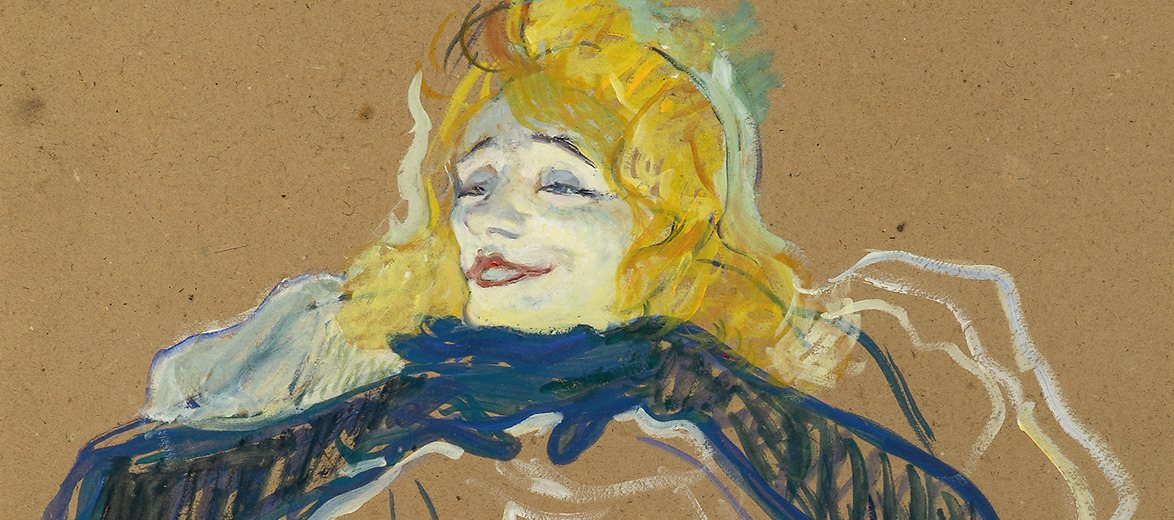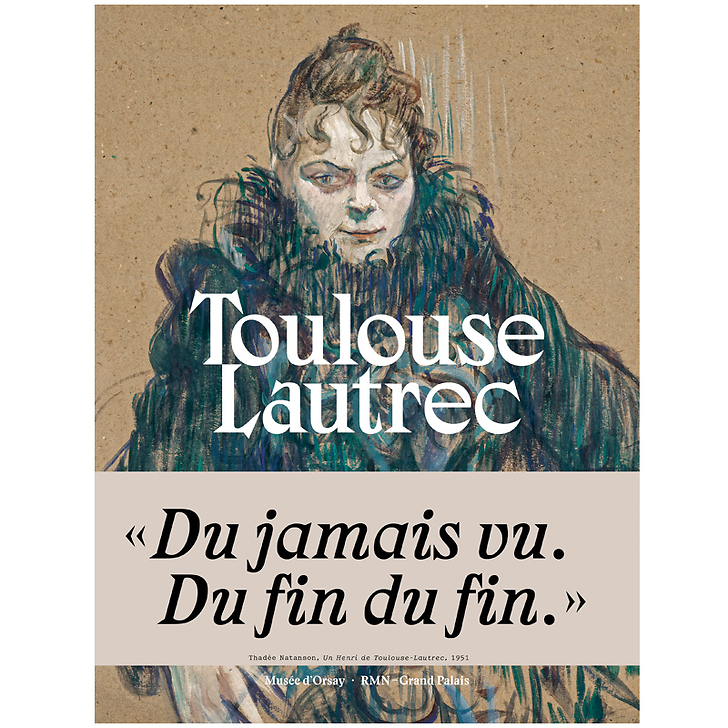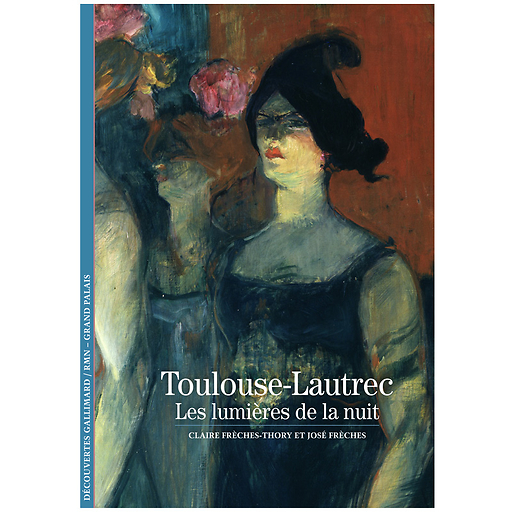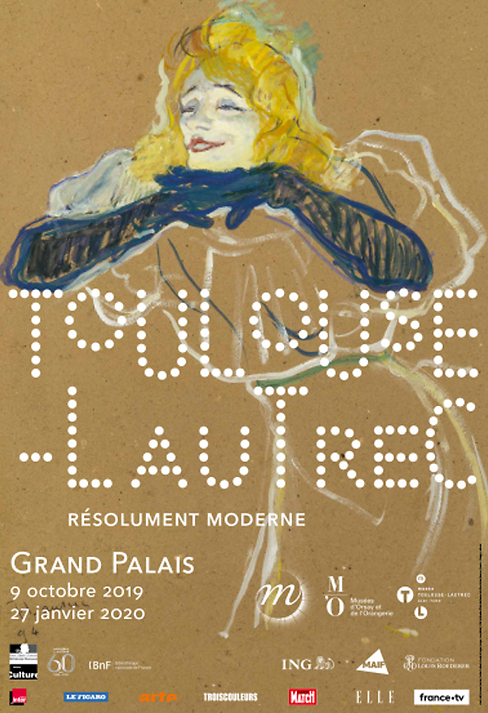Toulouse-Lautrec, Resolutely Modern

Toulouse-Lautrec, Resolutely Modern
From the 9 October 2019 to the 27 January 2020
Since 1992, the date of the last French retrospective of the artist, countless exhibitions have explored the connections in the works of Toulouse-Lautrec to «Montmartre culture», which he concurrently chronicled and criticised. This sociological approach, pleased by what it tells us of the expectations and anxieties of the time, reduced the scope of an artist whose origins, opinions and open aesthetics protected him from all inquisitorial temptation. Lautrec never positioned himself as an accuser of urban vices and decadent affluence. By his birth, training and life choices, he saw himself rather as a pugnacious and comical interpreter, terribly human in the sense of Daumier or Baudelaire, of a freedom that needs to be better understood by contemporary audiences. By giving too much weight to the context and folklore of the Moulin-Rouge, we have lost sight of the aesthetic, poetic ambition which Lautrec invested in what he learned, in turn, from Princeteau, Bonnat and Cormon. As evidenced by his correspondence, Manet, Degas and Forain allowed him, from the mid- 1880s, to transform his powerful naturalism into a more incisive and caustic style. Yet there was no linear, uniform progression, and true continuities are observed on both sides of his short career. One of them is the narrative component from which Lautrec strayed much less than one might think. It is particularly clear in his approaches to death, around 1900, when his vocation as a historical painter took a desperate turn. The other dimension of the work that must be attached to his training is the desire to represent time, and soon to deploy duration as much as freeze momentum. Encouraged by his photographic passion and the success of Degas, electrified by the world of modern dancers and inventions, Lautrec never ceased to reformulate the space-time of the image.
Toulouse - Lautrec in a few dates
1864 : Henri de Toulouse-Lautrec-Monfa was born in Albi. He was the son of Count Alphonse de Toulouse-Lautrec-Monfa (1838-1913) and Adèle Tapié de Céleyran (1841-1930), his first cousin. Affected by a genetic disease that weakens his entire skeleton, he suffers from a disability since adolescence.
1872 : Henri enters the Lycée Fontanes, 8, rue du Havre, Paris 9th arrondissement. There he met Maurice Joyant (1865-1930) who became his friend.
1881: The young man enters the studio of René Princeteau (1843-1914), a friend of his father's, famous for his equestrian paintings. He obtained his bachelor's degree.
1882 : He joined the studio of the history painter Léon Bonnat (1833-1922).
1883-1887: He became a student of Fernand Cormon (1854-1924). Among the students who attended the workshop, he became friends with Louis Anquetin (1861-1932), Émile Bernard (1868-1941) and Vincent Van Gogh (1853-1890). The 4 artists are nicknamed the "petit boulevard" group. The young artist settles in Montmartre and now signs "Treclau", Lautrec en verlan.
1888 : He exhibited for the first time at the exhibitions of the XX group in Brussels.
1889 : Lautrec participates in group exhibitions: des Arts incohérents; Cercle artistique et littéraire, 7, rue Volney; Salon de la Société des Artistes Indépendants; Galerie Goupil. He presents 7 works at the Galerie Le Barc de Bouteville, during the first exhibition of impressionist and symbolist painters.
1894-1895 : The painter travels: to Holland, Belgium, Spain and visits London, Lisbon. 1898: On April 30, an exhibition opens in London at the Goupil Gallery on Regent Street, which includes works in a wide variety of media.
1899 : Her mother is informed of her son's very worrying condition: increasing irritability, memory loss, uncontrolled acts, delirium tremens... From February to May, Lautrec was interned for detoxification in a private clinic in Neuilly. He will only be able to release a series of 39 compositions on the circus after he has drawn a series from memory.
1901: The artist died on September 9 at the age of 36, a victim of a brain hemorrhage. His death occurred at the Château de Malromé, a family residence located in the Gironde department. Translated with www.DeepL.com/Translator
Many books
Painter witnessing the Parisian nights, Toulouse - Lautrec is also a drawer with an incisive and caustic line, an outstanding colourist, who knew how to represent with the same humanity the bourgeoisie, the acrobats or the girls of joy. Find all our books dedicated to this resolutely modern artist.
Like in the Fernando circus
As a teenager, Toulouse - Lautrec discovered the world of the circus for which he immediately became passionate. Synonymous with freedom, the Fernando circus will inspire many of the artist's works. Here, children are immersed in the heart of the Fernando circus with its many animals and trainers!
All our partnerships
Find all the articles resulting from our collaborations with brands of know-how
The designer AnaGold
A certified jeweller and plumage maker, member of the Ateliers d'Art de France and holder of the labels "Artisans du Tourisme", "Winner of a grant from the IDF region" and the "Charte Qualité de la CMA92", the designer AnaGold manufactures her pieces in her Parisian workshop. Each piece of jewellery is unique: the feathers are made from molt and common species (goose, pheasant, peacock, ostrich...). The mink used in small touches comes from scraps from Parisian garment workshops
The Brochier House
Since 1890, the Brochier family has been perpetuating a Lyonnaise tradition that began in the 16th century: the manufacture of exceptional fabrics from natural silk yarns. Combining a deep taste for craftsmanship and an acute artistic sensitivity, Jean Brochier and his descendants have given silk satin its letters of nobility. Through its collaboration, which quickly became a sincere friendship with artists such as Chagall, Miro, Giacometti, couturiers such as Dior or Patou, patrons such as Aimé Maeght, Brochier has brought and continues to bring "Haute Nouveauté" to a level of excellence recognized throughout the world.
House F Paris
Maison F was founded in 2011. It is the very first and only emblematic French top-of-the-range clothing accessory house as a whipmaker. French weavers and manufacturers contribute to the excellence of its collections. Maison F Paris stands out through quality and perfect service. The artistic direction is entrusted to François-Régis Laporte's creative, modern and functional eye. F is aimed at lovers of identity houses, specialized and recognized for their know-how.



